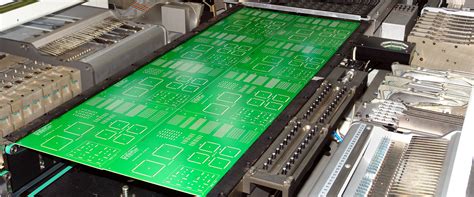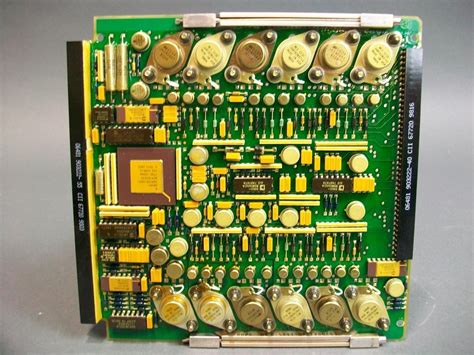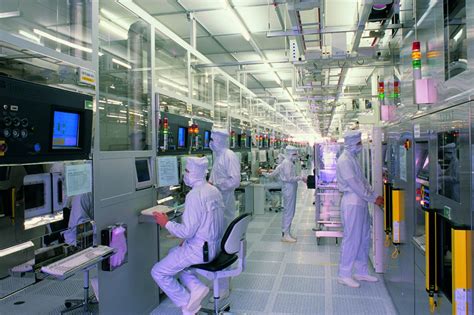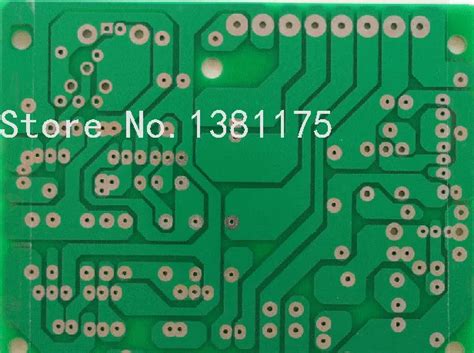Top 10 Global PCB Manufacturers Dominating Electronics Industry 2023

Key Takeaways
When navigating the PCB manufacturing landscape, understanding the strategic advantages of leading PCB manufacturing companies becomes critical. These industry giants combine cutting-edge technology with economies of scale to optimize PCB manufacturing cost, enabling them to dominate markets from consumer electronics to aerospace. Rigid-flex boards, HDI technologies, and high-frequency materials are among the innovations driving this sector, with Asia-Pacific players—particularly in China and Taiwan—accounting for over 60% of global production.
As you evaluate suppliers, consider how PCB manufacturing business models prioritize agility: top-tier firms integrate AI-driven quality control and IoT-enabled supply chains to reduce lead times by up to 30%. Meanwhile, sustainability initiatives, such as halogen-free substrates and water-saving processes, are reshaping cost structures. Whether sourcing for prototyping or mass production, balancing technical expertise with regional logistics networks remains key—especially as geopolitical shifts and material shortages add complexity to pricing and delivery timelines.
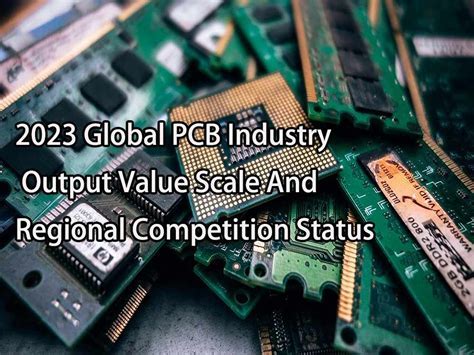
Global PCB Manufacturers Leading 2023 Innovations
When you look at the PCB manufacturing landscape in 2023, it’s clear that innovation is being driven by advancements in materials, miniaturization, and sustainability. Leading PCB manufacturing companies are investing heavily in high-density interconnect (HDI) boards, flexible circuits, and eco-friendly production methods to meet the demands of 5G, IoT, and electric vehicles. For instance, companies like Zhen Ding Tech and Unimicron are pioneering ultra-thin substrates, while Samsung Electro-Mechanics focuses on embedding passive components directly into PCBs—slashing PCB manufacturing cost and boosting performance.
Here’s a quick comparison of key players:
| Company | HQ Location | Specialty |
|---|---|---|
| Zhen Ding Tech | Taiwan | HDI & flexible PCBs |
| Unimicron | Taiwan | Automotive & AIoT boards |
| TTM Technologies | USA | Aerospace & defense systems |
| Samsung Electro-Mech | South Korea | Advanced substrate tech |
| AT&S | Austria | Medical & industrial PCBs |
Balancing PCB manufacturing business priorities—like scalability and precision—requires leveraging AI-driven quality control and automated assembly lines. This shift not only reduces defects but also aligns with global sustainability goals, as seen in water-efficient production methods. Meanwhile, China and Taiwan continue to dominate production volumes, accounting for over 60% of global output, thanks to vertically integrated supply chains and government incentives. Whether you’re sourcing rigid, flex, or hybrid boards, understanding these innovations ensures you stay ahead in an industry where miniaturization and thermal management are no longer optional—they’re essential.
Top Circuit Board Suppliers Worldwide Comparison
When evaluating PCB manufacturing leaders, you’ll notice a mix of established giants and agile innovators shaping the industry. Companies like Zhen Ding Tech (China), Unimicron (Taiwan), and TTM Technologies (U.S.) dominate global production scales, while firms such as Samsung Electro-Mechanics (South Korea) push boundaries in high-density interconnect (HDI) technology. These PCB manufacturing companies differentiate themselves through R&D investments, with some dedicating over 8% of annual revenue to advanced materials and miniaturization techniques.
Tip: When sourcing PCBs, prioritize suppliers with certifications like ISO 9001 or IATF 16949 to ensure quality compliance for mission-critical applications.
PCB manufacturing cost remains a key differentiator, with Asian producers leveraging economies of scale to offer competitive pricing—often 15–30% lower than Western counterparts. However, factors like tariffs, logistics complexity, and customization requirements can offset initial savings. For example, rigid-flex PCB prototypes might cost $2–5 per square inch in China versus $8–12 in Europe. To optimize budgets, balance regional advantages with technical expertise: Taiwanese firms excel in high-mix, low-volume orders, while mainland Chinese factories dominate mass production.
The PCB manufacturing business increasingly emphasizes sustainability, with leaders adopting water recycling systems and halogen-free substrates to meet eco-regulations. As you compare suppliers, consider how their innovation pipelines align with emerging trends like 5G infrastructure or automotive electrification—sectors projected to drive 60% of PCB demand growth by 2025.
Rigid Flex HDI PCB Market Leaders Revealed
When exploring the PCB manufacturing landscape, you’ll notice that rigid-flex and high-density interconnect (HDI) technologies are reshaping industries from aerospace to wearables. Leading PCB manufacturing companies like Unimicron, AT&S, and TTM Technologies dominate this niche, combining advanced engineering with economies of scale to optimize PCB manufacturing cost. Their ability to produce ultra-thin, multi-layered boards with precise impedance control makes them indispensable for 5G infrastructure and IoT devices.
What sets these leaders apart is their investment in material innovation—using polyimide films and low-loss substrates—and automated production lines that ensure consistency in high-volume orders. For instance, Unimicron’s focus on laser direct imaging (LDI) reduces defects in PCB manufacturing business workflows, while TTM’s hybrid rigid-flex designs cut assembly time by 30%. As you assess suppliers, consider how their R&D aligns with your needs: smaller players might offer flexibility, but giants deliver reliability for mission-critical applications.
Balancing PCB manufacturing cost with performance remains key. Companies like Shenzhen Fastprint leverage China’s supply chain advantages to offer competitive pricing, whereas European firms prioritize sustainability certifications. Whether you prioritize miniaturization or thermal management, the leaders in this space prove that innovation drives value—even in the most complex PCB manufacturing projects.
China and Taiwan PCB Industry Dominance Analysis
When evaluating global pcb manufacturing leadership, you’ll find China and Taiwan collectively account for over 60% of worldwide production. This dominance stems from unmatched supply chain networks, advanced infrastructure, and government-backed incentives that reduce pcb manufacturing cost for both domestic and international clients. Major pcb manufacturing companies like China’s Shennan Circuits and Taiwan’s Unimicron have scaled operations through precision engineering and automation, enabling them to deliver high-volume orders without compromising quality.
Taiwan’s expertise in high-density interconnect (HDI) boards complements China’s strength in mass-producing rigid-flex PCBs, creating a symbiotic ecosystem. While Chinese firms benefit from lower labor costs and expansive industrial zones like Shenzhen and Kunshan, Taiwanese players focus on R&D-driven pcb manufacturing business models, targeting niche applications in 5G and AI hardware. Together, they set global benchmarks for efficiency—China’s vertical integration slashes material expenses, while Taiwan’s semiconductor partnerships accelerate prototyping cycles.
This dual advantage positions both regions as indispensable hubs, especially as Western brands seek to balance pcb manufacturing cost with reliability. However, geopolitical tensions and shifting trade policies could reshape dynamics, urging companies to diversify suppliers without sacrificing the technical edge these Asian giants provide.
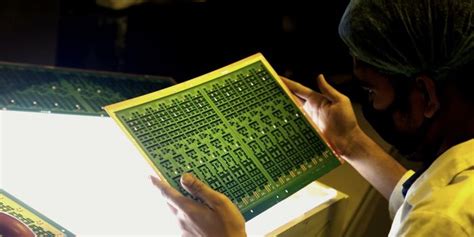
Electronics Manufacturing Giants Shaping PCB Trends
When you consider how PCB manufacturing evolves, industry giants like Foxconn, Samsung Electro-Mechanics, and TSMC play pivotal roles in setting global standards. These corporations don’t just produce circuit boards—they redefine scalability and precision through advanced automation and R&D investments. For instance, innovations in PCB manufacturing cost reduction—such as AI-driven defect detection or energy-efficient production lines—enable these leaders to balance affordability with cutting-edge performance.
Taiwan’s Unimicron and China’s Shennan Circuits further exemplify how regional dominance in PCB manufacturing companies translates to worldwide influence. By specializing in high-density interconnect (HDI) and flexible PCBs, they cater to surging demand in 5G, automotive electronics, and IoT. You’ll notice their strategies often prioritize vertical integration, controlling everything from raw material sourcing to distribution—a model that smaller PCB manufacturing business entities increasingly emulate to stay competitive.
What truly sets these giants apart is their ability to adapt. Whether addressing geopolitical supply chain shifts or integrating eco-friendly materials, they shape trends that ripple across the industry. For businesses entering the PCB manufacturing space, understanding these dynamics isn’t optional—it’s critical for aligning with market expectations and technological advancements.
2023’s Most Advanced PCB Technologies Unveiled
As global electronics demand accelerates, PCB manufacturing innovations are redefining performance benchmarks. Leading PCB manufacturing companies now deploy additive processes like semi-additive manufacturing (mSAP) to create ultra-fine circuits below 10µm, enabling next-gen wearables and IoT devices. Embedded component technology integrates passive elements directly into substrates, slashing PCB manufacturing costs by 15–20% while improving signal integrity.
You’ll find high-density interconnect (HDI) designs dominating premium applications, with stacked microvias and any-layer builds achieving 20% higher routing density than 2022 standards. For flexible circuits, stretchable conductive inks and polyimide-based materials are pushing bend cycles beyond 500,000—critical for foldable displays and medical wearables.
Advanced thermal management solutions, such as metal-core PCBs with graphene coatings, now dissipate heat 40% faster, addressing power demands in EV charging systems. Meanwhile, AI-driven PCB manufacturing business models optimize material utilization, reducing waste by 30% through predictive analytics.
When evaluating suppliers, prioritize firms adopting 3D-printed substrates and ultra-low-loss laminates for mmWave 5G applications. These breakthroughs not only enhance performance but also streamline PCB manufacturing timelines, ensuring your projects stay ahead in 2023’s competitive landscape. Your selection of cutting-edge technologies will directly impact scalability, reliability, and cost-efficiency across production cycles.
Key Players in Global PCB Production Growth
When evaluating the expansion of PCB manufacturing capabilities worldwide, you’ll notice a handful of industry giants driving over 60% of market growth. Companies like Zhen Ding Tech, Unimicron, and TTM Technologies lead in scaling production capacities, leveraging cutting-edge automation to address rising demand for high-density interconnect (HDI) boards. Their dominance stems from strategic investments in R&D and partnerships with electronics OEMs, ensuring alignment with evolving needs for 5G infrastructure and IoT devices.
What sets these PCB manufacturing companies apart is their ability to balance PCB manufacturing cost efficiency with stringent quality standards. For instance, advanced factories in China and Taiwan now integrate AI-driven defect detection systems, reducing waste by up to 30% compared to traditional methods. Meanwhile, Southeast Asian facilities are gaining traction by offering competitive labor rates without compromising on multilayer board precision.
For businesses entering the PCB manufacturing business, understanding regional specialization is critical. While Chinese firms excel in high-volume rigid PCB production, Taiwanese leaders focus on flexible and hybrid designs for wearables and aerospace applications. This geographic diversification ensures a resilient supply chain, even as material shortages and geopolitical tensions reshape global trade dynamics. By prioritizing innovation and sustainability, these key players are redefining how modern electronics ecosystems source their core components.

Innovative PCB Solutions Driving Electronics Evolution
As electronics demand smarter, smaller designs, PCB manufacturing leaders are redefining what’s possible. Cutting-edge innovations like embedded components and ultra-thin substrates enable devices to achieve higher performance while shrinking footprints. Leading PCB manufacturing companies now integrate AI-driven quality control systems, slashing defect rates by up to 40% and optimizing PCB manufacturing cost for high-volume production.
Advancements in high-density interconnect (HDI) and flex-rigid hybrid boards are critical for wearables, medical devices, and 5G infrastructure. For instance, manufacturers using semi-additive processes can produce circuits with 15-micron traces—thinner than a human hair—unlocking new possibilities for IoT and automotive systems.
Balancing innovation with affordability remains a challenge. While automation reduces labor expenses, rising material costs pressure the PCB manufacturing business to adopt sustainable practices, like recycling copper-clad laminates. By prioritizing R&D and lean production, top firms maintain their edge in a market where miniaturization and reliability are non-negotiable.
This evolution isn’t just about technology—it’s about reshaping how industries approach electronics design, ensuring every innovation aligns with global demands for efficiency and scalability.
Conclusion
As you’ve seen, the global PCB manufacturing landscape in 2023 is shaped by a blend of innovation, scale, and strategic positioning. Leading PCB manufacturing companies continue to push boundaries in rigid, flex, and HDI technologies, ensuring their solutions meet the demands of next-gen electronics. When evaluating these industry giants, it’s critical to consider not just their technical expertise but also how they manage PCB manufacturing cost—a factor that directly impacts supply chain efficiency and product affordability.
Whether you’re sourcing components or planning partnerships, understanding the dynamics of the PCB manufacturing business helps identify players who balance quality with scalability. The dominance of manufacturers in regions like China and Taiwan underscores their ability to leverage advanced production ecosystems while maintaining competitive pricing. Moving forward, prioritizing partnerships with firms investing in automation and sustainable practices will position your projects at the forefront of electronics evolution. By aligning with these leaders, you ensure access to cutting-edge solutions that drive both performance and value.

FAQs
How do you choose the right PCB manufacturing partner for your project?
Start by evaluating their expertise in rigid, flex, or HDI boards, production capacity, and certifications. Leading PCB manufacturing companies often provide transparent cost breakdowns and prototyping options to align with your PCB manufacturing cost expectations.
What factors influence PCB manufacturing cost?
Costs depend on board complexity, material quality, layer count, and order volume. Advanced technologies like high-density interconnect (HDI) or specialized substrates can increase expenses, but partnering with scalable PCB manufacturing suppliers helps balance budgets.
Why do China and Taiwan dominate the PCB manufacturing business?
Their dominance stems from advanced infrastructure, skilled labor, and government support. Many top-tier PCB manufacturing companies in these regions offer competitive pricing and rapid turnaround, making them hubs for global electronics production.
What innovations are shaping PCB manufacturing in 2023?
Trends include eco-friendly materials, AI-driven quality control, and ultra-thin flexible boards. These advancements enable PCB manufacturing businesses to meet demands for smaller, faster, and more energy-efficient devices.
Can smaller businesses compete with global PCB manufacturing giants?
Yes! Niche suppliers often specialize in low-volume, high-mix production or rapid prototyping. By optimizing PCB manufacturing cost structures, they cater to startups and R&D teams without sacrificing quality.
Ready to Streamline Your PCB Production?
For tailored solutions from industry-leading PCB manufacturing companies, please click here to explore customized options that align with your technical and budgetary needs.

